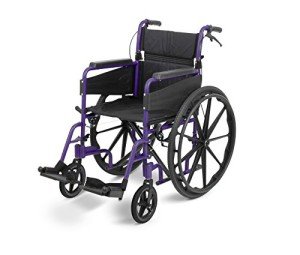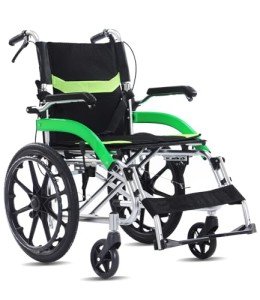Five Killer Quora Answers On How To Self Propel A Wheelchair
페이지 정보

본문
 How to Self Propeller a Wheelchair
How to Self Propeller a Wheelchair Self-propelling wheelchairs can open up a new world of independence. It takes practice and the correct body position to achieve this.
Self-propelling wheelchairs can open up a new world of independence. It takes practice and the correct body position to achieve this.A proper body position requires a precise grip and pushing technique. This article will concentrate on these skills, as well as other important aspects of wheelchair propelling.
Hand Positioning
Properly pushing a transit wheelchair vs self propelled using hands is an essential component of self-propulsion. Begin with accuracy and then move on to speed. It's also recommended to sit down while pushing to improve the stability and comfort, particularly for users with upper body restrictions. The hands should be positioned to correspond with the speed of the wheel and to push evenly with both hands, without wrapping the thumbs around the hand-rims. This is a common omission which reduces efficiency and increases the amount of force required for each stroke.
The path for recovery of the hands should be in a relaxed pendular fashion below the hand-rims after each propelling cycle to avoid contact with the rear wheels (a "semi-circular" recovery pattern). This helps reduce the strain on the shoulders, while keeping the length of each stroke and the number of cycles to an absolute minimum.
It is sometimes suggested to utilize long strokes and full recovery when working on more difficult surfaces (like the hand position on the timepiece). This can reduce shoulder injuries caused by repeated motion, but can increase loading at the shoulders with each cycle.
It is also possible to reduce shoulder injuries by using the same position while driving and braking. If the wheelchair user can maintain a consistent rhythm in both actions it will be simpler to manage the forces applied and adjust for changes in the all terrain self propelled wheelchair.
On slippery or muddy roads, it is essential to lean slightly forward when moving to stop the wheels from sinking in the ground and falling over. You should test different trunk leans to determine the ideal balance between too much and too little lean. Like any new skill, regular practice will result in increased efficiency and confidence. Wheelchair propulsion is an essential skill for those with mobility challenges and can open up a whole world of freedom. With the right technique, the right equipment and some education anyone can learn how to Self propel a wheelchair to operate their manual wheelchair easily! This entry was posted under News and classified as wheelchair.
Foot Positioning
It is important to ensure that the client's feet are properly positioned for stability. It is not recommended to have the wheelchair's feet too far apart because it makes it difficult to self-propel. But, in some cases, it is necessary to navigate difficult terrain. For instance, if the client is going to go down a very steep ramp, or even over one of our fantastic National Parks or beaches, the wheelchair needs to have wheels that can move up and over them in a manner that allows the user to move forward. This is achieved by placing the front wheels in the manner shown in the photo below.
If the person is equipped with this system, they can just grasp the wheels' rims and push them in a direction to advance. This requires the use of a lot of upper body strength and is very slow but it is doable and it allows clients who would otherwise not be able to get down or up hills to do so.
It is also important for the customer to be capable of doing wheelies, so that they can go over obstacles such as curbs or other people. In this position the client should place his left foot on top of the right side to lift themselves up and over the obstruction. The user will then move their right leg up and over the obstacle whilst pushing with their left hand. This is referred to as the crabwalk. It is a very effective way to get a wheelchair moving across some of our most challenging terrain.
Self-propelled wheelchairs, also known as manual chairs as they are sometimes called they are a fantastic solution for many injured and disabled individuals who want to be able to move themselves without having to rely on someone else for assistance. They are compact, lightweight self propelled wheelchairs and foldable, so they require less space than other mobility aids. By utilizing accessories like the E-Motion they can be converted into powerchairs, allowing users the freedom to use their chair and the additional benefit of electric assistance when needed.
Braking
Self-propulsion a wheelchair is a crucial skill for individuals with mobility challenges. It lets them navigate various kinds of terrains and conditions independently. It also helps them build strength in their shoulders and upper arms.
To move a wheelchair forward, the user must apply pressure to one hand rim while pulling up on the opposite side. This push-pull motion generates momentum and pushes the wheelchair in the direction desired. The speed at which the wheelchair is moved can be adjusted by applying pressure in a different amount or quantity on the rims, or using hand brakes if equipped with them.
The ideal push cycle should last at least three hours. This will reduce the time that the shoulder is occupied and reduce the chance of injury due to repetitive strain. The width and size of the back wheels will also determine the speed at which a wheelchair is propelled. Smaller wheels are more comfortable to maneuver, while larger wheels require more effort. Wheelchairs can also be designed with camber, which improves the ease of pushing by aligning the rear wheels with the biomechanics and mechanics of the shoulders and maximizing the lateral stability.
Wheelchair users who wish to improve their techniques for propelling should practice in a safe area like a parking area or a hall without people. The aim is to develop long smooth strokes that permit the wheelchair to glide between strokes.
It is also crucial that the user learn to maneuver when moving, for example, navigating turns or weaving around objects. This can be done by weaving around cones and then transferring to straight-line motions. The more one practices the more easy it is for them to master this.
Self-propelled wheelchairs are an ideal device to allow people to remain active and do the things they love. They can provide autonomy and are a great tool for socializing, going to the cinema or even travel. By learning the proper use of a wheelchair you will be able to continue or gain back your independence and get to where you want to be.
Stability
A wheelchair user who can self-propel their chair is able to be self-sufficient and go where they want to go without relying on others. It does require a lot of upper body strength however it is possible to push the wheel on flat surfaces, or even up small hills. This is why many wheelchair users choose to use an attendant controlled (also known as an attendant propelled) chair such as the Action3 NG or ErgoLite 2 and are pushed by an attendant.
It is important to learn how to grip the rims of the hands of a manual wheelchair correctly to ensure maximum functionality and comfort. We often see that customers who use this kind of chair have their hand rims too far forward, meaning they are forced to reach further backwards using their arms. This is not efficient biomechanically and can lead to shoulder strain over time.
The ideal hand-propulsion motion is a semi-circular pattern in which the user is switching between the push and recovery phase. The push phase involves the client pushing down onto the casters of the wheelchair which requires the use of many small strokes. This push pattern helps to keep a healthy range of motion and exercise the shoulder retractor muscle.
When the recovery phase starts the client moves their hands back towards the rims of the wheel until they make contact with the casters. This allows for longer strokes and also reduces friction during the recovery phase. Some wheelchair users will slide their hands across the wheels in a smooth arc during this time, but this isn't as effective and may create extra wear on the rims.
The position of the rear wheels to allow narrow self propelled wheelchair uk-propulsion is a crucial aspect of stability. If the wheel is too far forward, then a person could slide off their wheelchair with ease. This can make it difficult to maneuver around obstacles and it's not a wise choice for shoulder injuries. To determine which wheel is best for a person it is necessary to evaluate their strength, range-of-motion and muscle tone, their orthopedic status, and other factors during the seating assessment.
- 이전글High 10 Online Live Casino Accounts To Comply with On Twitter 25.01.04
- 다음글14 Common Misconceptions About Sash Window Locks 25.01.04
댓글목록
등록된 댓글이 없습니다.